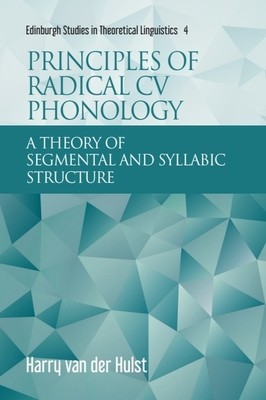
- We will send in 10–14 business days.
- Author: Harry van der Hulst
- Publisher: Edinburgh University Press
- ISBN-10: 1474454666
- ISBN-13: 9781474454667
- Format: 15.6 x 23.4 x 2.9 cm, hardcover
- Language: English
- SAVE -10% with code: EXTRA
Reviews
Description
Harry van der Hulst's model of Radical CV Phonology has roots in the framework of Dependency Phonology, but proposes a rather different 'geometry', which reduces the set of unary elements to just two: C and V. The model explains the phonological distinctions that function contrastively in the world's languages rather than presenting it as a 'random' list. Van der Hulst shows how this model accounts for a number of central claims about markedness and minimal specification. He explains how the representational system accounts for phonological rules and shows how this theory can be applied to sign language structure. Through comparison to other models, he also provides insight into current theories of segmental structure, commonly used feature systems, as well as recurrent controversies.
EXTRA 10 % discount with code: EXTRA
The promotion ends in 11d.17:26:34
The discount code is valid when purchasing from 10 €. Discounts do not stack.
- Author: Harry van der Hulst
- Publisher: Edinburgh University Press
- ISBN-10: 1474454666
- ISBN-13: 9781474454667
- Format: 15.6 x 23.4 x 2.9 cm, hardcover
- Language: English English
Harry van der Hulst's model of Radical CV Phonology has roots in the framework of Dependency Phonology, but proposes a rather different 'geometry', which reduces the set of unary elements to just two: C and V. The model explains the phonological distinctions that function contrastively in the world's languages rather than presenting it as a 'random' list. Van der Hulst shows how this model accounts for a number of central claims about markedness and minimal specification. He explains how the representational system accounts for phonological rules and shows how this theory can be applied to sign language structure. Through comparison to other models, he also provides insight into current theories of segmental structure, commonly used feature systems, as well as recurrent controversies.


Reviews